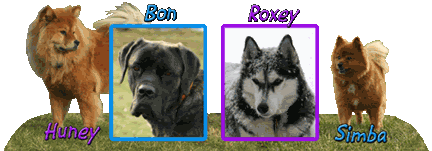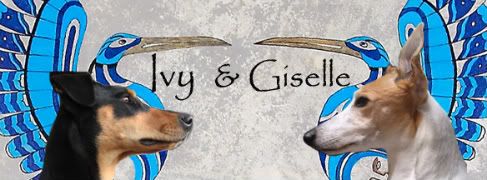Not sure why I am posting this. Maybe to see if putting it out there will make me feel better. But, I need help and suggestions with Taz. We have had three incidents where he has either nipped at or bitten children. The first two incidents were similar, we were outside and the child (different child on both times) were running or shuffling their feet by him. On the first occasion he grabbed the child's sock and growled. On the second occasion, the child sort of danced around Taz, then leaned down to pet him and Taz nipped him. He didn't break skin and he has allowed that child to pet him many times in the past with no problems. Alright, that brings us to yesterday. I had company; my neice and nephew came over with their families. So that would be four adults, two eight year old boys, a 2 1/2 year old boy and a 2 1/2 year old girl. I had warned everyone beforehand to be careful about running in my small condo, as it may make Taz go after their feet. Anyway, everything was going very very well, Taz was letting all of the children pet him, and was doing his cat-like rubbing against all of the adults. The older boys were playing ball with Ginger and people started running around, still Taz did not seem particularly stressed. All of the adults were sitting in the livingroom talking, the little ones were with us, and Ginger was playing ball with the older boys which meant back and forth between the livingroom and den. Taz jumped in my lap, I think I may have put my arm around him. Emma (2 year old girl) was sitting on her father's lap to my right, she reached over to pet Taz and he bit her. It was a pretty good bite on the palm/wrist area, there was a fair amount of blood, although once it stopped bleeding it wasn't too bad.
I am sure I reacted wrong after the bite. By that I mean, I think the trainers would say put him down, because he cannot do that on my lap. However, my first thought was, if I put a biting dog down in the midst of all of these kids the parents would be upset. So I held on to him even tighter. Of course I told him "no." But in all of the ensuing activity I doubt that it made an impact. After carrying him around for a while I finally realized that he would have to spend the rest of the visit in his crate, which he did (although he cried a fair amount of the time). However, that wasn't good enough because the little girl was now afraid of all of my dogs, and after about an hour I realized that I had to close Ginger in the bedroom, even though she was being a very good girl and hadn't done anything wrong.
So now I am trying to do damage control, because she is going to be scared to come back to my small condo where she will be stuck inside with two scary dogs. And I am trying to figure out how to make sure Taz will not bite children. Any suggestions?
While I am at it, now that Taz is feeling more comfortable, he is getting a little more obnoxious around some other male dogs in the neighborhood. If everyone is loose and can run around and play (like at the dog park) he is fine. On lead walking around the neighborhood, if a male dog spends what he (Taz) considers to be too much time looking at him, he will go after the dog. I MUST have a dog that can go for three walks each and every day without biting any people or dogs in the neighborhood.
I think I am just going through a bad period right now, and this problem is just as important to me as some of the other things going on. Oh well, we have a play date in 30 minutes, wish us luck.







 Reply With Quote
Reply With Quote I totally understand how your feeling so very stressed out (going through a little of that myself at the moment) and I wish there was something I could say to make you feel better.
I totally understand how your feeling so very stressed out (going through a little of that myself at the moment) and I wish there was something I could say to make you feel better.
 Huney, Bon & Simba-missed so very much
Huney, Bon & Simba-missed so very much So their energy, lack of control, and lack of better judgment make them easy targets for fearful small dogs. The best thing to do in fear-based cases is to teach child to respect the dog's space and to teach the dog that the child is a positive thing.
So their energy, lack of control, and lack of better judgment make them easy targets for fearful small dogs. The best thing to do in fear-based cases is to teach child to respect the dog's space and to teach the dog that the child is a positive thing.



 . I knew when I bought Taz home that I was going to have to let him know I am boss, and I intended to do NILIF, was I/am I consistent? No. And I do understand that if I am not consistent he isn't going to understand what I am asking.
. I knew when I bought Taz home that I was going to have to let him know I am boss, and I intended to do NILIF, was I/am I consistent? No. And I do understand that if I am not consistent he isn't going to understand what I am asking.  I do have a question along those lines, though. How consistant do I need to be? By that I mean, I may be able to take Taz out once a day by himself so that we can work on these things individually. But our other walks will be with Ginger. Would the fact that I am paying closer attention at some times and not others confuse him?
I do have a question along those lines, though. How consistant do I need to be? By that I mean, I may be able to take Taz out once a day by himself so that we can work on these things individually. But our other walks will be with Ginger. Would the fact that I am paying closer attention at some times and not others confuse him?


Bookmarks